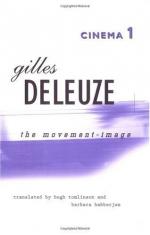
|
| Name: _________________________ | Period: ___________________ |
This quiz consists of 5 multiple choice and 5 short answer questions through Frame and Shot, Framing and Cutting.
Multiple Choice Questions
1. What helps montage occur?
(a) Second level shot.
(b) Cutting.
(c) Fixed camera.
(d) Unity of movement.
2. Which of the following is true of a saturated frame?
(a) It tends to create clear images.
(b) It tends to make images blur.
(c) It passes an image to the equilibrium.
(d) It offers a spectator frontal view.
3. In a montage, how often does the camera move?
(a) Sometimes, but not often.
(b) Sometimes, more often than not.
(c) Only in exceptional situtations.
(d) Always.
4. Which of these terms describes a geometrical frame?
(a) Closed.
(b) United.
(c) Equal.
(d) Frontal.
5. What term does Deleuze describe as relating movement to a changing whole?
(a) Montage.
(b) Spectator frontal view.
(c) Second level shot.
(d) Unmoving set.
Short Answer Questions
1. What is the second element of Bergson's second thesis?
2. What does phenomenology study?
3. Which term is defined as a frame set with many elements?
4. What is the first element of Bergson's third thesis?
5. A montage offers what view?
|
This section contains 166 words (approx. 1 page at 300 words per page) |

|




